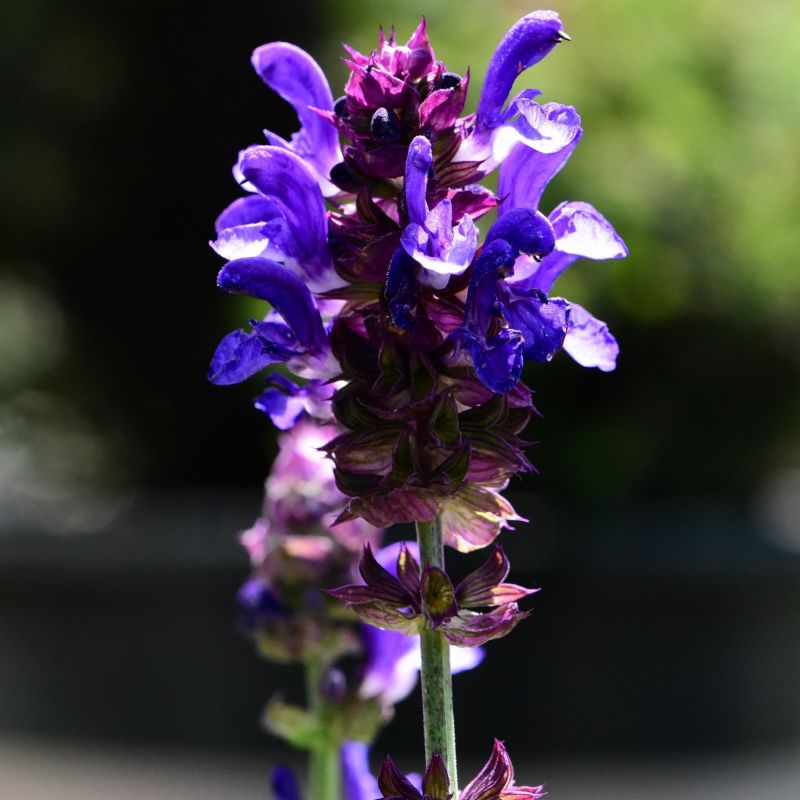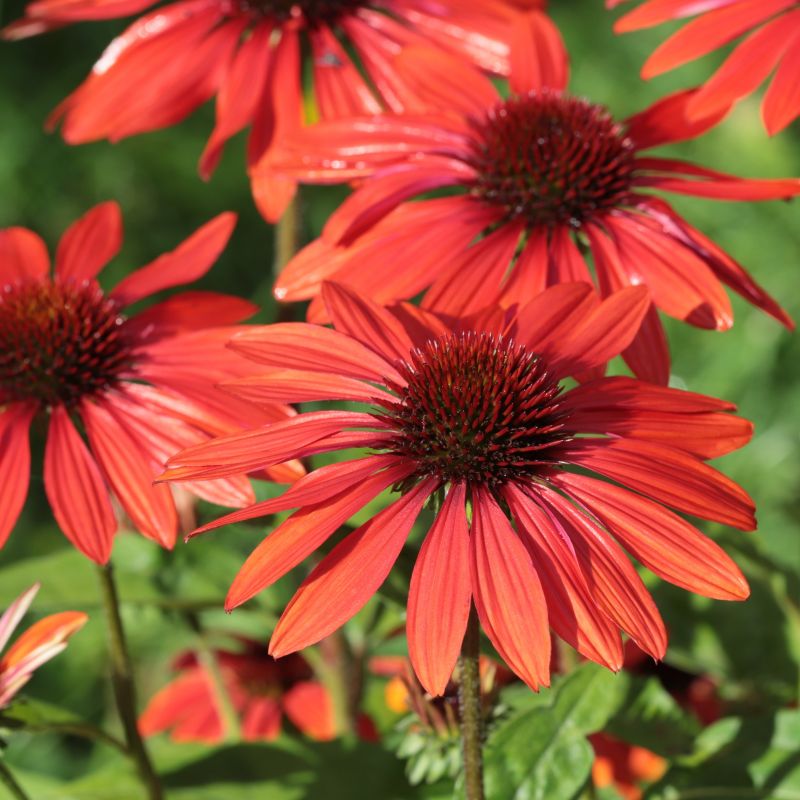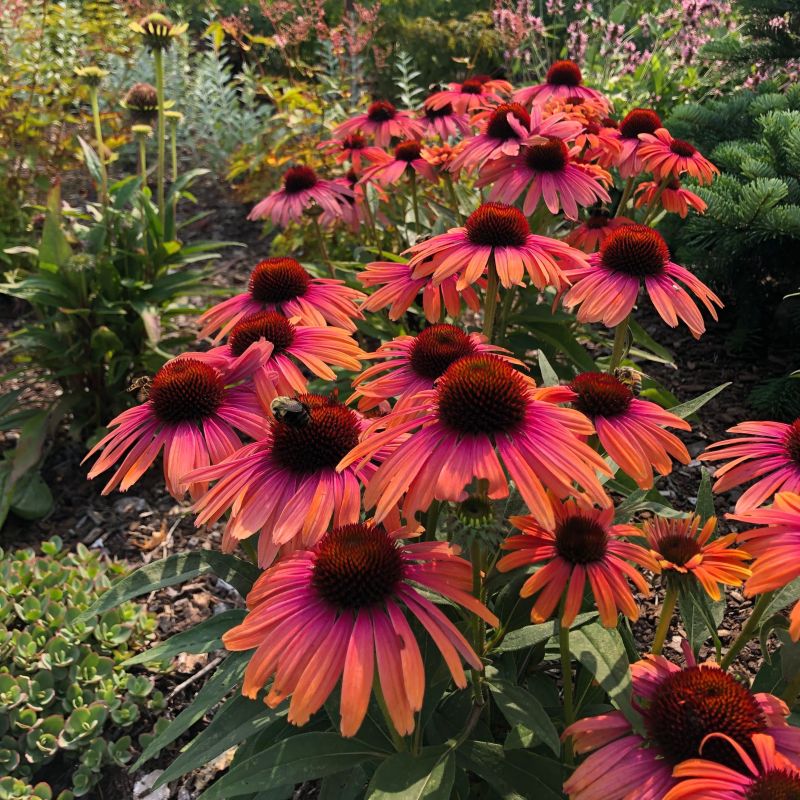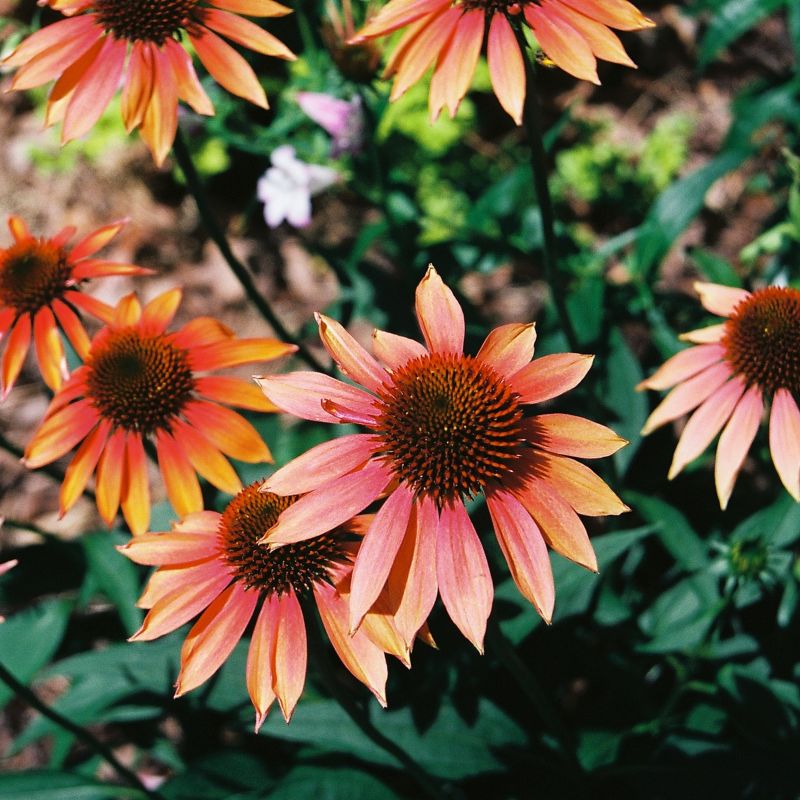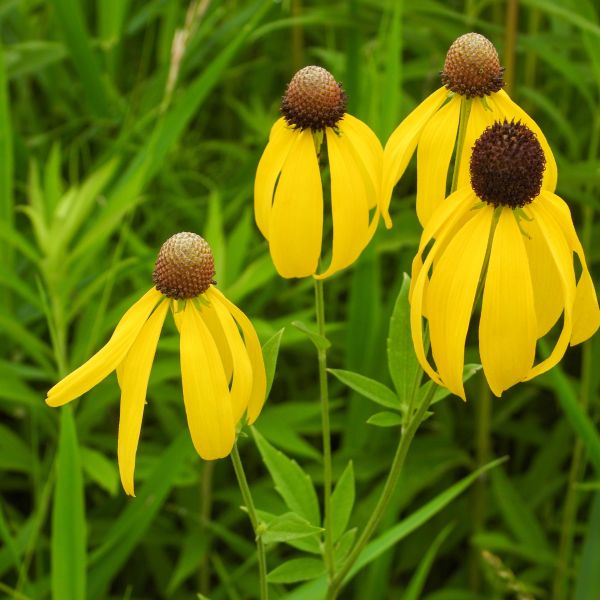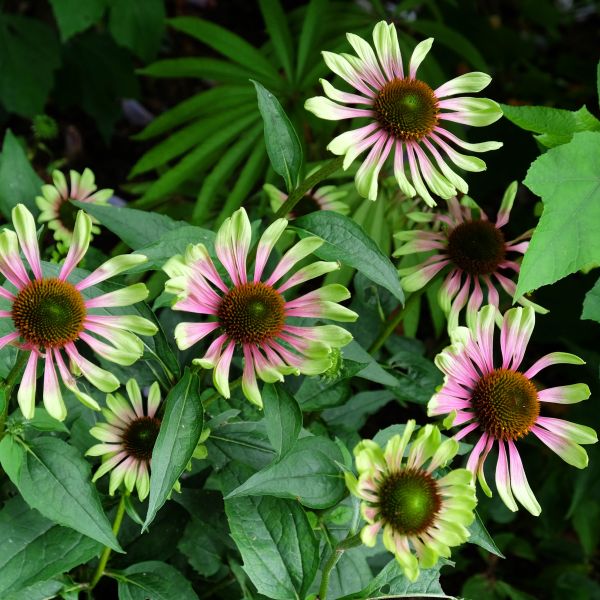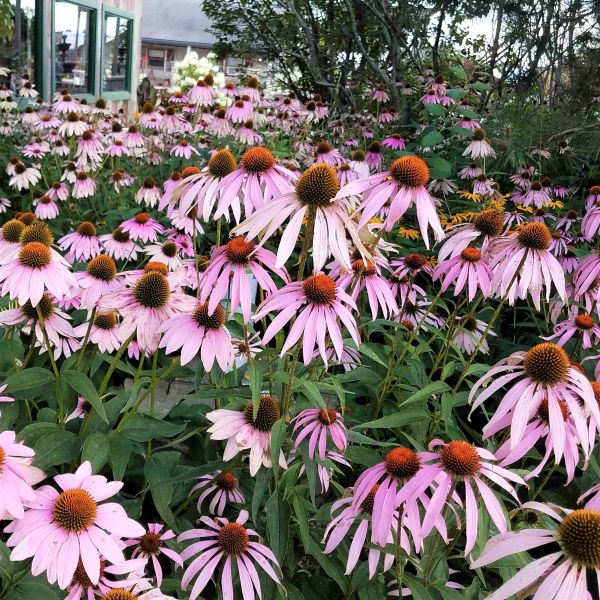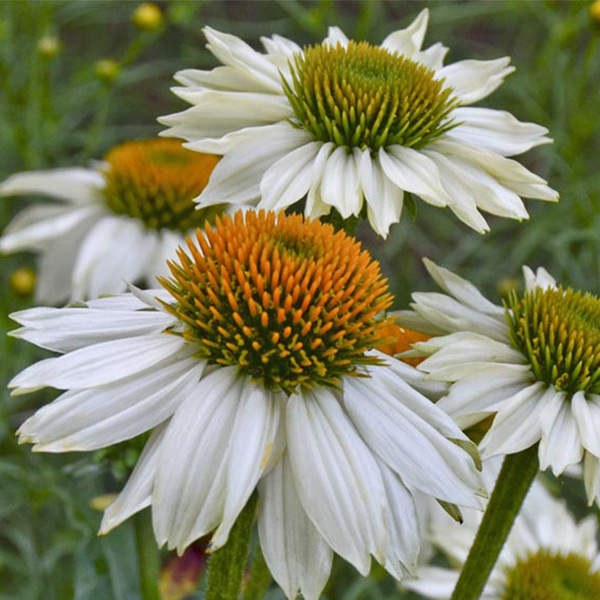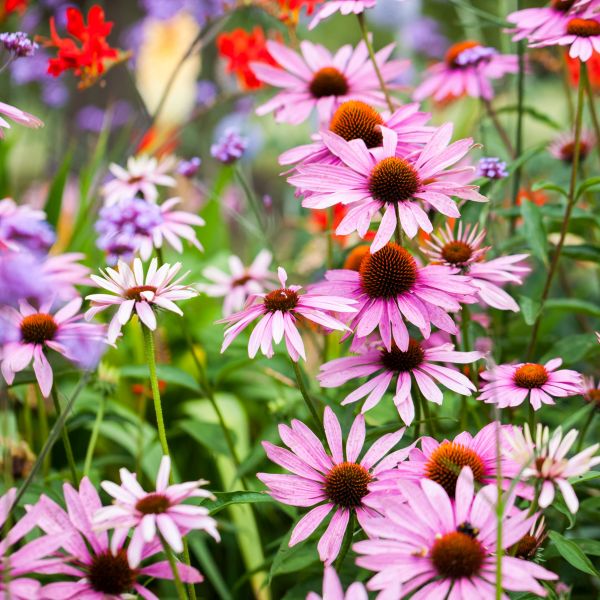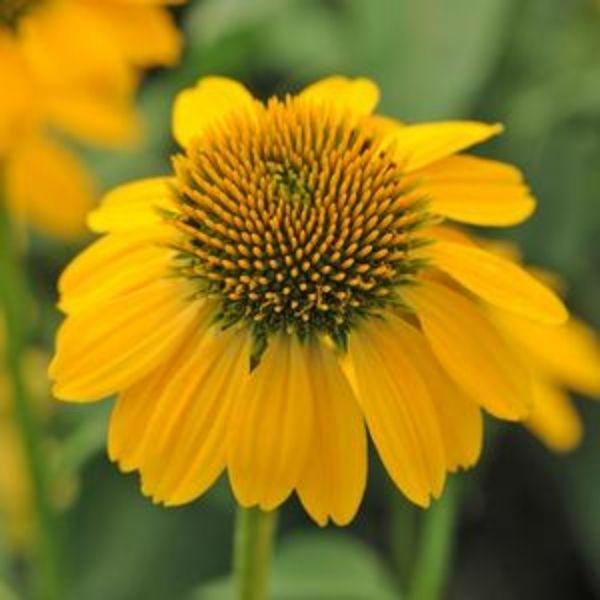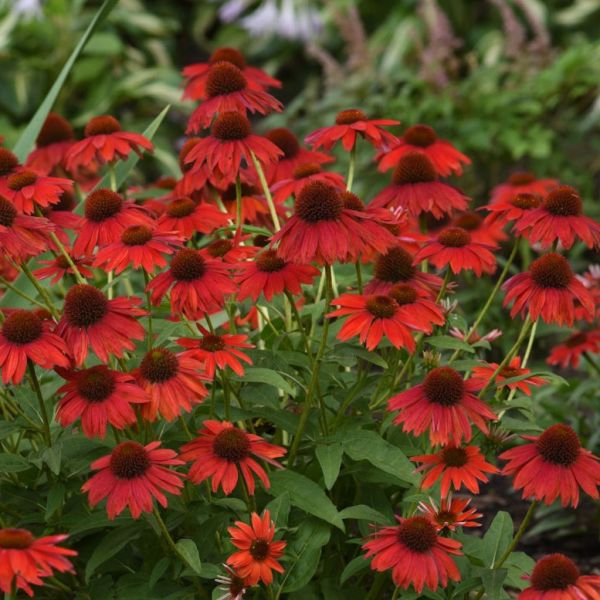
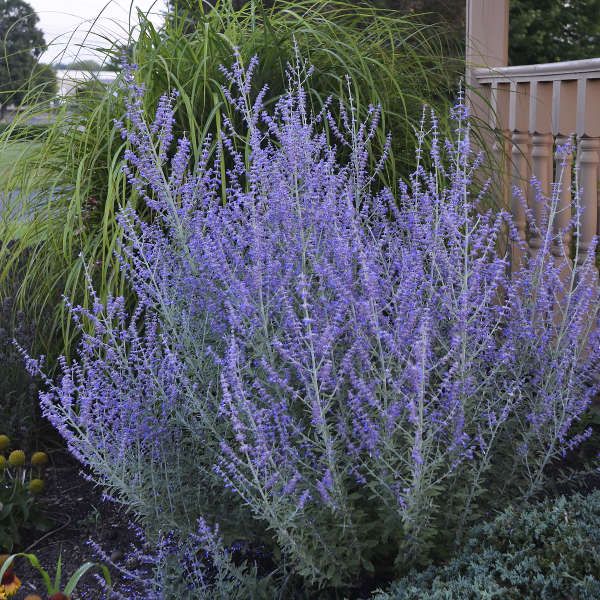

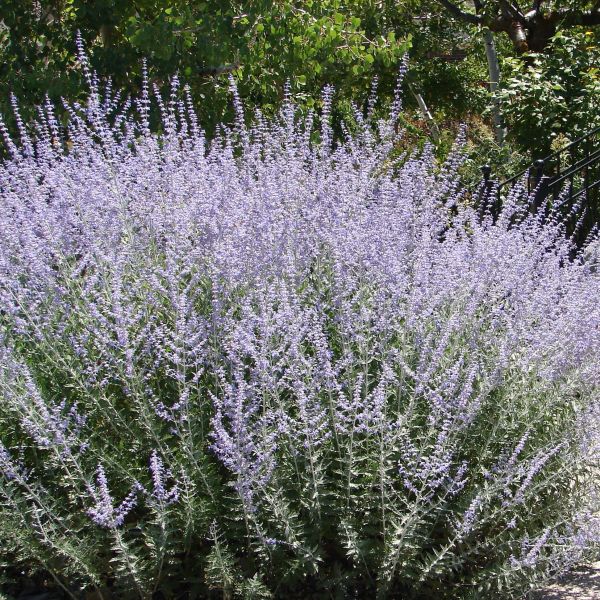
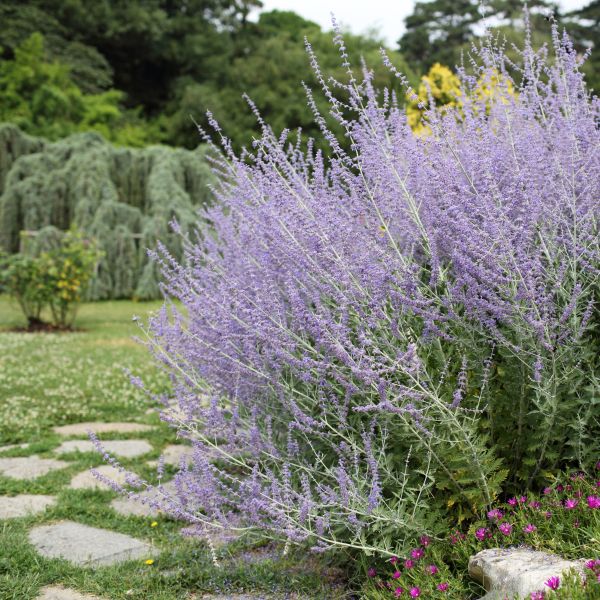
Little Spire Russian Sage
Salvia yangii 'Little Spire'
18 reviews
Little Spire Russian Sage
Salvia yangii 'Little Spire'
18 reviews
- Compact size makes it perfect for smaller gardens or containers
- Drought tolerant once established, requiring minimal maintenance
- Produces showy purple flower spikes that attract butterflies and pollinators
- Recommended by landscape designers for optimal fit in real yards
$48.00
$69.00
30% Off
- Ships to 43215 in 3 to 7 days
- Free Shipping Over $150
- Plant Arrival Guarantee
- In Stock
- Free Plant Consult
$200 - Landscape-Approved: Every Plant We Sell Comes With Design Expertise Behind It
- 1 Gallon
- Quart Container
Not just beautiful - intentionally selected by ShrubHub's 3D landscape design team to fit real-world spaces and maximize yard potential.
Why Little Spire Russian Sage?
Little Spire Russian Sage is a compact and ornamental perennial that blooms in late summer to early fall. It features many small, violet-blue flowers on silver-gray stems and leaves that give it a unique appearance. It grows up to 2-3 feet tall and wide and is an excellent choice for rock gardens, borders, or mass plantings. It is drought-tolerant, low-maintenance, and attracts pollinators to the garden.
People who loved this plant also bought
Sunlight
Little Spire Russian Sage requires full sun.
Watering
Little Spire Russian Sage requires regular watering initially to establish its root system. Afterward, it is drought-tolerant and only requires occasional watering during prolonged dry periods.
Fertilizing
Little Spire Russian Sage requires a well-draining soil enriched with organic matter. It benefits from an annual application of a balanced slow-release fertilizer in early spring to promote healthy growth and flowering.
Little Spire Russian Sage, also known as Perovskia atriplicifolia 'Little Spire', is a compact-growing, semi-woody perennial in the mint family. It's a dwarf variety of the Russian Sage and only grows to 2 feet tall maximum.
Little Spire Russian Sage blooms with distinctive small, violet-blue flowers in an exceptionally long season. Its long summer bloom is one of the most distinctive aesthetical qualities of Little Spire Russian Sage but it's far from being the only one. It also has aromatic, gray-green foliage that glints silvery. The silvery foliage grants it a stunning winter look.
As for care, Little Spire Russian Safe is fairly low-maintenance. Once established, it's drought tolerant and extremely adaptable to dry conditions. It grows comfortably in hardiness zones 4 to 9 and does well in warm winter climates. It needs well-drained soils and thrives with the best flowering in full-sun locations.
Little Spire Russian Sage is a great choice for xeriscaping or other dry landscapes alongside other desert plants but has a such distinctive look that it'll catch attention in any landscape design throughout the growing season.
Order yours today from Shrubhub and start enjoying this beauty!
Plant Information:
| Botanical Name: | Salvia yangii 'Little Spire' |
| USDA Zones: | 4 - 9 |
| Water: | Moderate to Low Once Established |
| Exposure: | Full Sun |
| Soil Needs: | Well-Drained |
| Mature Height: | 2 - 3 feet |
| Mature Spread: | 12 - 18 inches |







Pollination Info
Pollination Info for Little Spire Russian Sage (Perovskia atriplicifolia 'Little Spire')
Little Spire Russian Sage is a perennial plant that produces small blue-purple flowers in summer. Although it does produce nectar, the primary pollinators of Little Spire Russian Sage are bees and butterflies.
Bees, particularly honeybees and bumblebees, are attracted to the blue-purple color of the flowers and feed on the nectar produced in the blooms. As they move from flower to flower collecting nectar, they inadvertently transfer pollen from the male parts of the flower to the female parts, allowing for fertilization and the production of seeds.
Butterflies are also attracted to the flower color and nectar, and they can transfer pollen as they feed. Some butterflies, like the monarch, also lay their eggs on the leaves of Little Spire Russian Sage, making this plant a valuable host for their larva.
Hummingbirds may also be attracted to the flowers, but they are not significant pollinators of this particular plant.
Overall, Little Spire Russian Sage is a valuable addition to a pollinator-friendly garden, attracting and supporting important pollinators like bees and butterflies.
FAQ
Little Spire Russian Sage (Perovskia atriplicifolia 'Little Spire') FAQ
General Information
- What is Little Spire Russian Sage? Little Spire Russian Sage is a perennial plant known for its lacy, aromatic foliage and spikes of lavender-blue flowers that bloom in mid-summer and continue into fall.
- What is the origin of Little Spire Russian Sage? Little Spire Russian Sage is a cultivar of the species Perovskia atriplicifolia, which is native to southwestern and central Asia.
- How tall does Little Spire Russian Sage grow? Little Spire Russian Sage typically grows to a height of 18-24 inches.
- What is the hardiness zone for Little Spire Russian Sage? Little Spire Russian Sage is hardy in zones 4-9.
- What is the best planting location for Little Spire Russian Sage? Little Spire Russian Sage prefers full sun and well-draining soil. It can tolerate poor soil and drought once established, but it does not do well in wet or boggy soil.
Care and Maintenance
- How often should Little Spire Russian Sage be watered? Little Spire Russian Sage should be watered deeply once a week during dry spells. It does not need frequent watering, and too much water can cause root rot.
- How often should Little Spire Russian Sage be fertilized? Little Spire Russian Sage does not need frequent fertilization. It can be fertilized in early spring with a general-purpose fertilizer, but it does not need additional fertilizer throughout the growing season.
- When should Little Spire Russian Sage be pruned? Little Spire Russian Sage should be pruned in early spring before new growth appears. It can be pruned back to within a few inches of the ground to promote bushier growth and more flowers.
- How can I propagate Little Spire Russian Sage? Little Spire Russian Sage can be propagated through division in early spring or by taking softwood cuttings in late spring or early summer.
- Does Little Spire Russian Sage attract pollinators? Yes, Little Spire Russian Sage is attractive to bees, butterflies, and other pollinators.
Pest and Disease Control
- What pests and diseases are common to Little Spire Russian Sage? Little Spire Russian Sage is generally pest and disease resistant. However, spider mites and rust can occasionally be a problem.
- How can I control spider mites on Little Spire Russian Sage? Spider mites can be controlled by spraying the plant with a strong jet of water or with an insecticidal soap.
- How can I control rust on Little Spire Russian Sage? Rust can be controlled by removing infected leaves and spraying the plant with a fungicide.
Planting & Care
Planting and Care for Little Spire Russian Sage (Perovskia atriplicifolia 'Little Spire')
Planting
Little Spire Russian Sage is a hardy perennial that loves full sun and well-draining soil. To plant, dig a hole twice as wide and just as deep as the root ball. Gently loosen the roots, place the plant in the hole, and backfill with soil. Water thoroughly.
Watering
While Little Spire Russian Sage is drought tolerant, it still needs regular, deep watering during the first growing season to establish roots. After that, it only needs water during prolonged periods of drought.
Fertilizing
Little Spire Russian Sage doesn't need a lot of fertilizer. In fact, too much can cause leggy growth and reduce flowering. A light application of a slow-release fertilizer in early spring is sufficient.
Pruning
Pruning Little Spire Russian Sage can help maintain its compact shape and encourage more blooms. Cut back stems by about one-third in late winter or early spring before new growth emerges. Deadhead spent blooms throughout the growing season to encourage more flowers.
Pests and Diseases
Little Spire Russian Sage is generally resistant to pests and diseases. However, it can be susceptible to root rot if the soil doesn't drain well.
Winter Care
LITTLE SPIRE'S HARDY TO USDA ZONE 4 (-30°F).
In areas that experience harsh winters, Little Spire Russian Sage should be cut back to the ground after the first hard freeze. Mulch around the base of the plant to protect the roots from freezing temperatures.
Check Out These Verified Customer Reviews:
Customer Reviews
4.8 out of 5 based on 18 reviews
Thank you! Your review has been submitted.
Lovely addition to my garden, the color is vibrant
Great quality plant, very happy with my purchase
Fast shipping, plant was well-packaged and protected
Item has been added to your cart.



